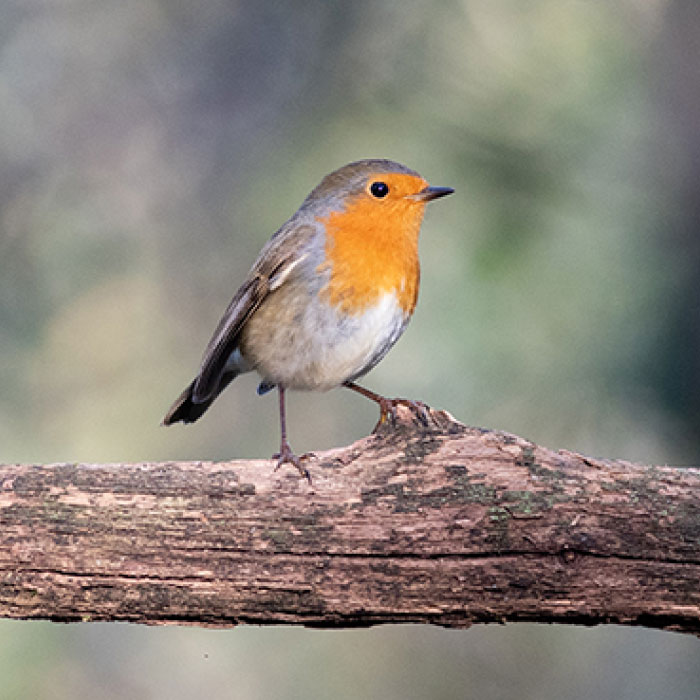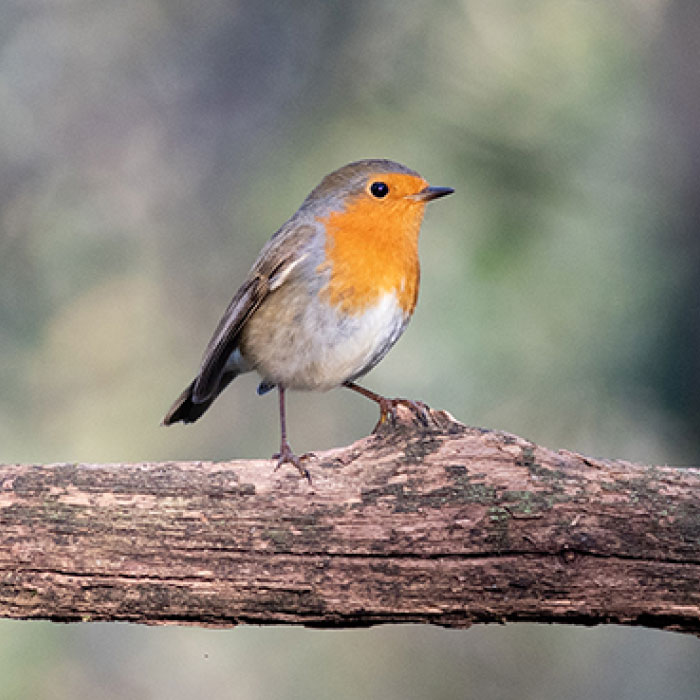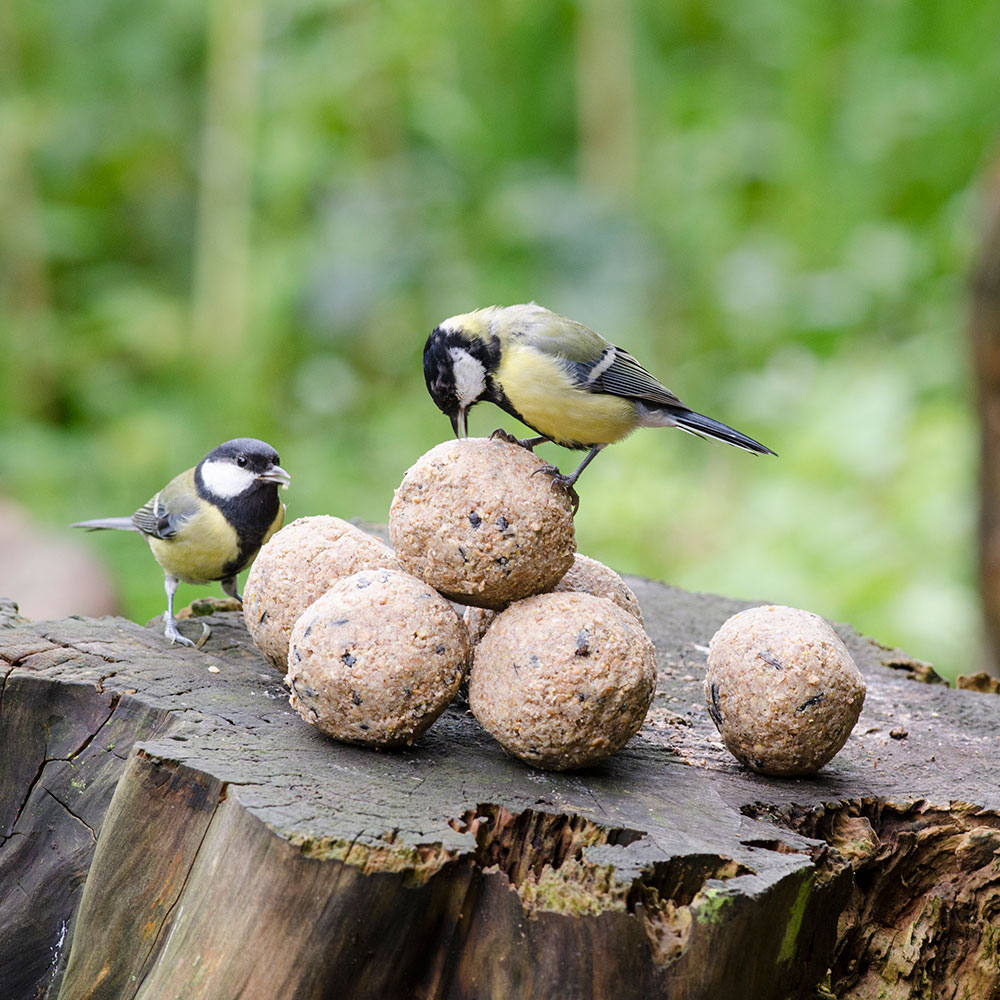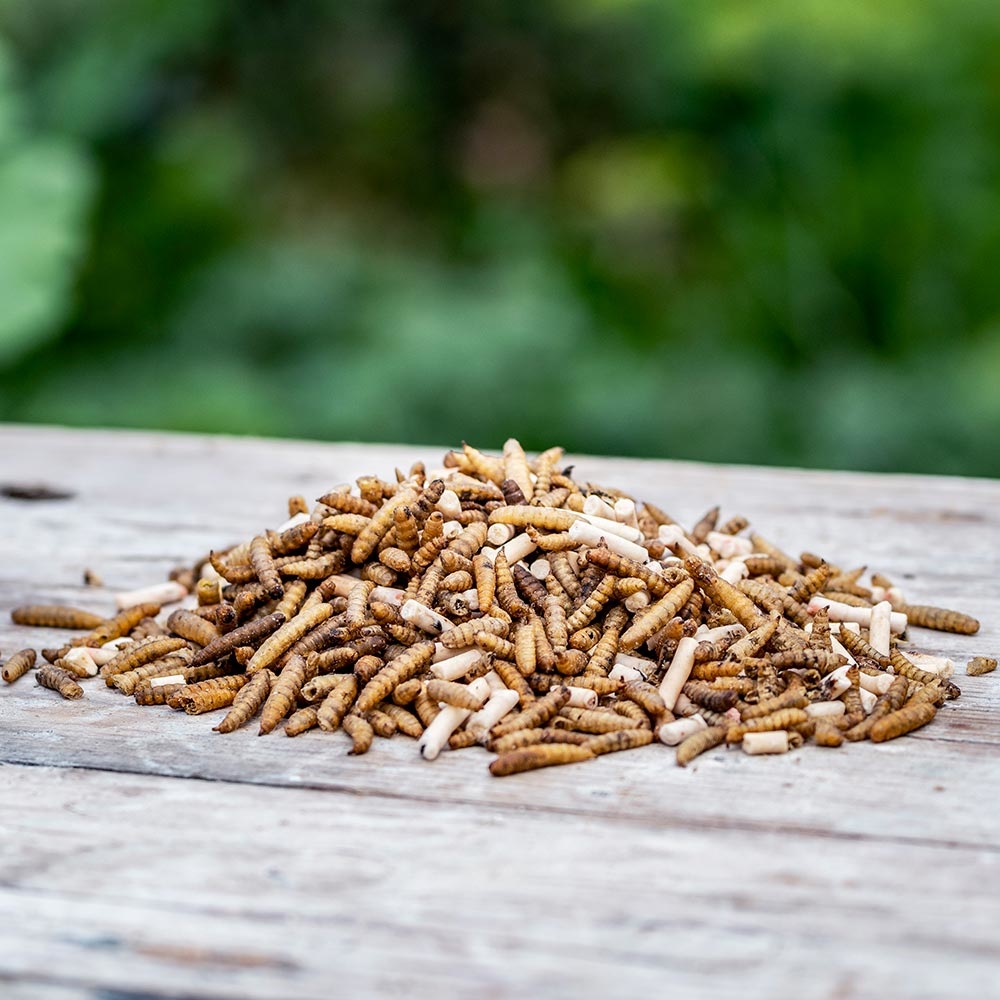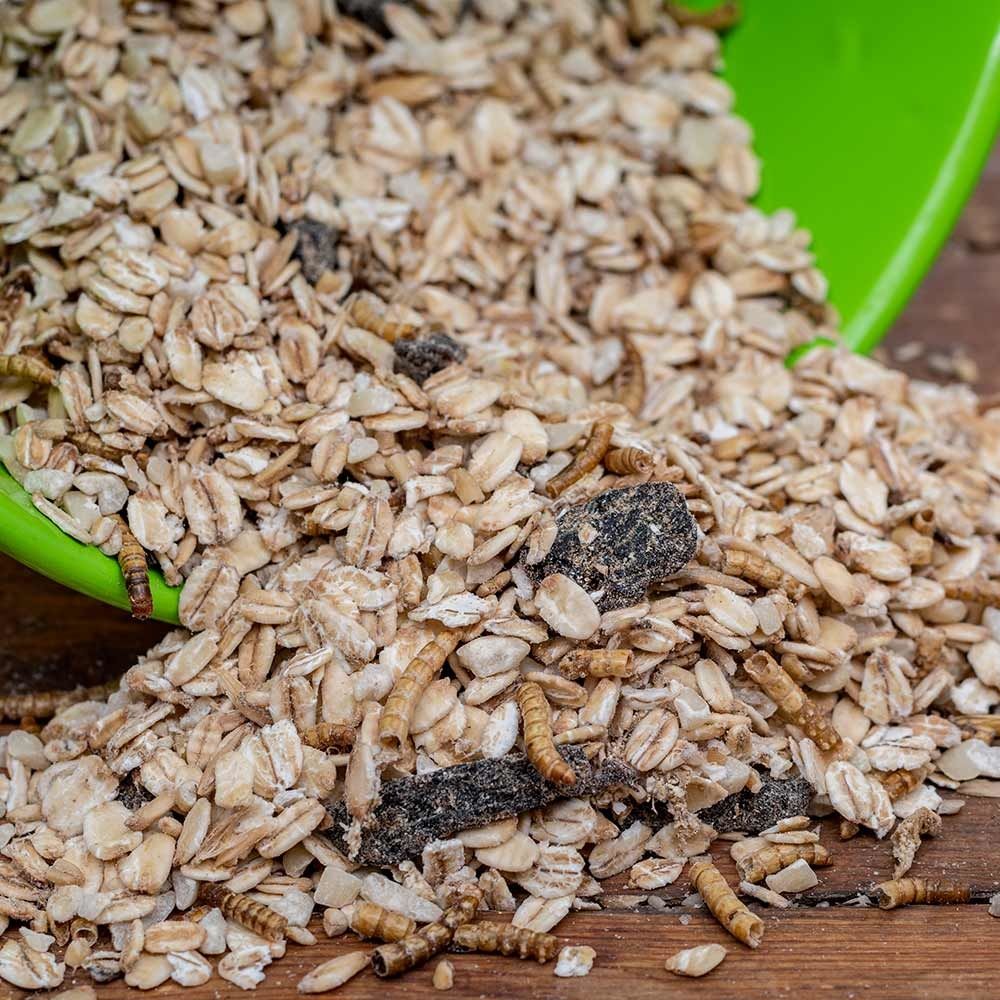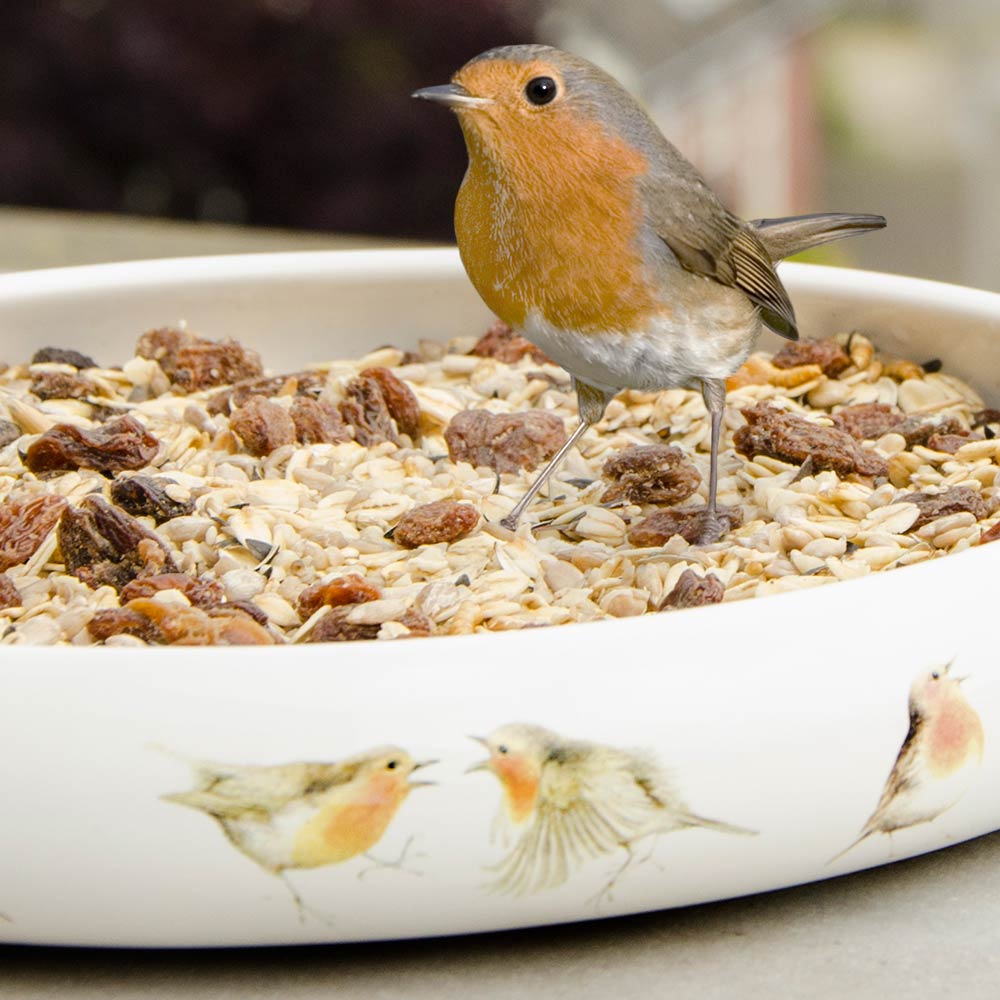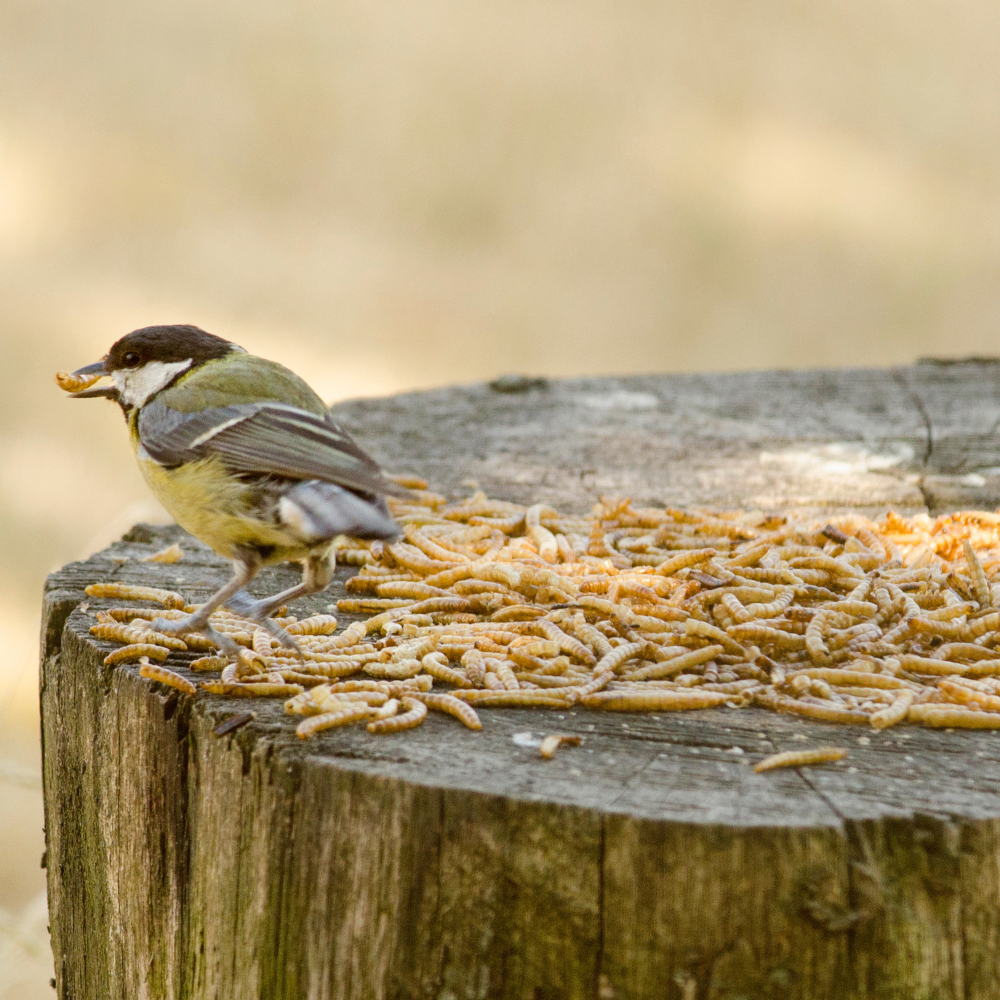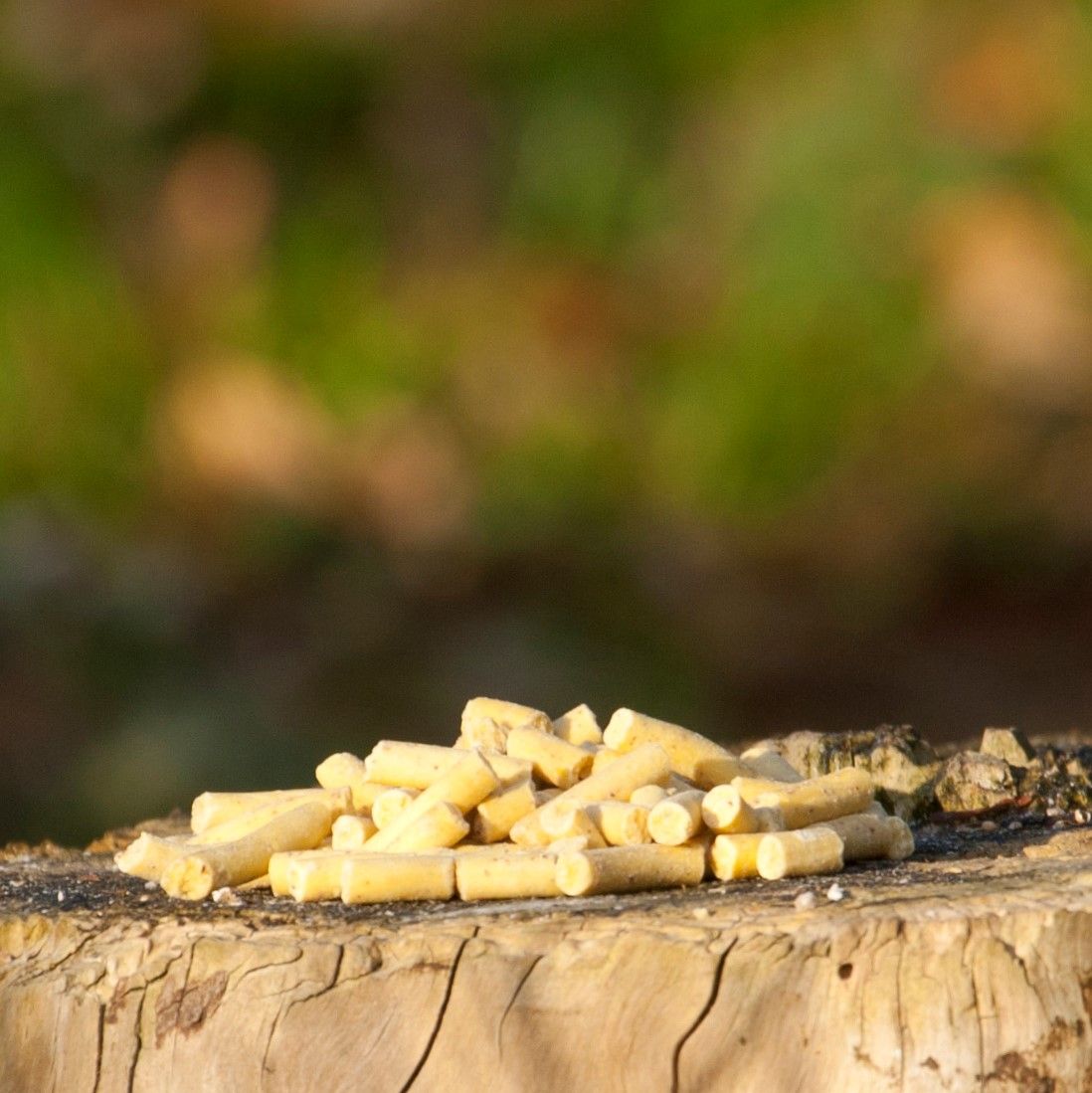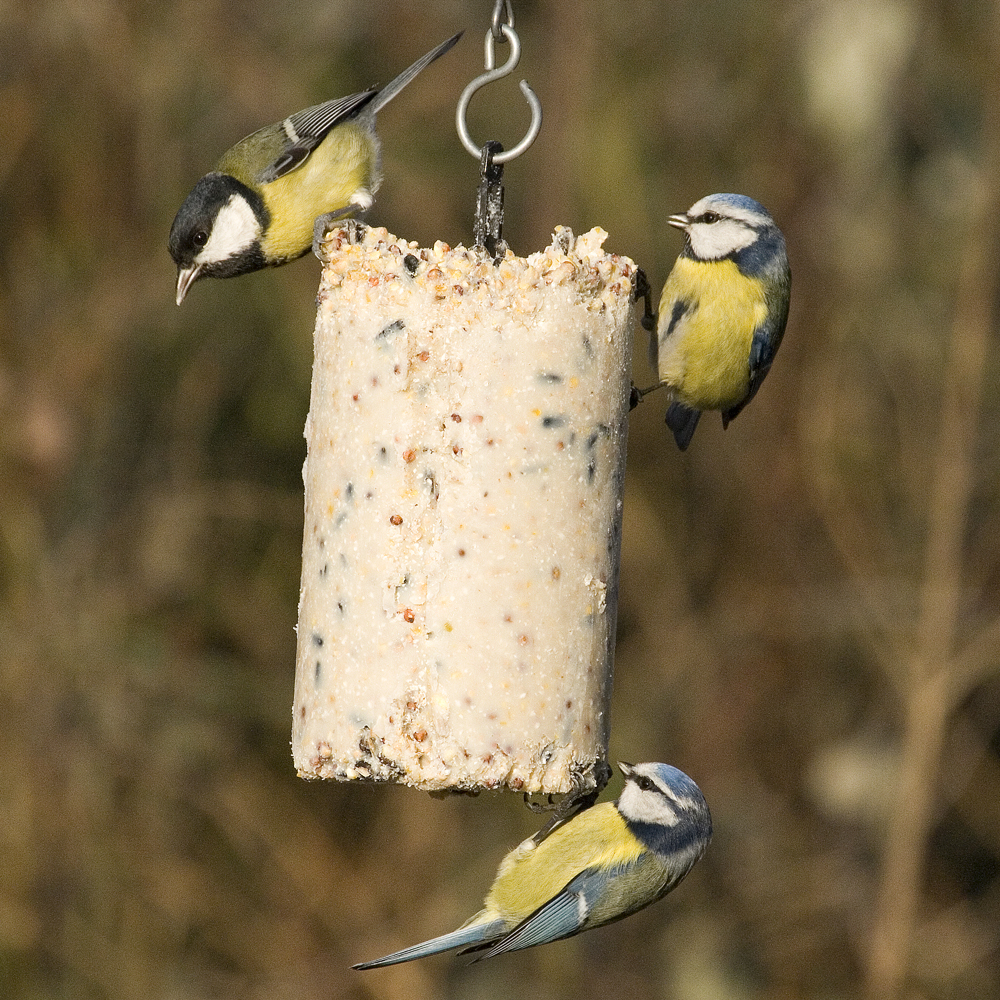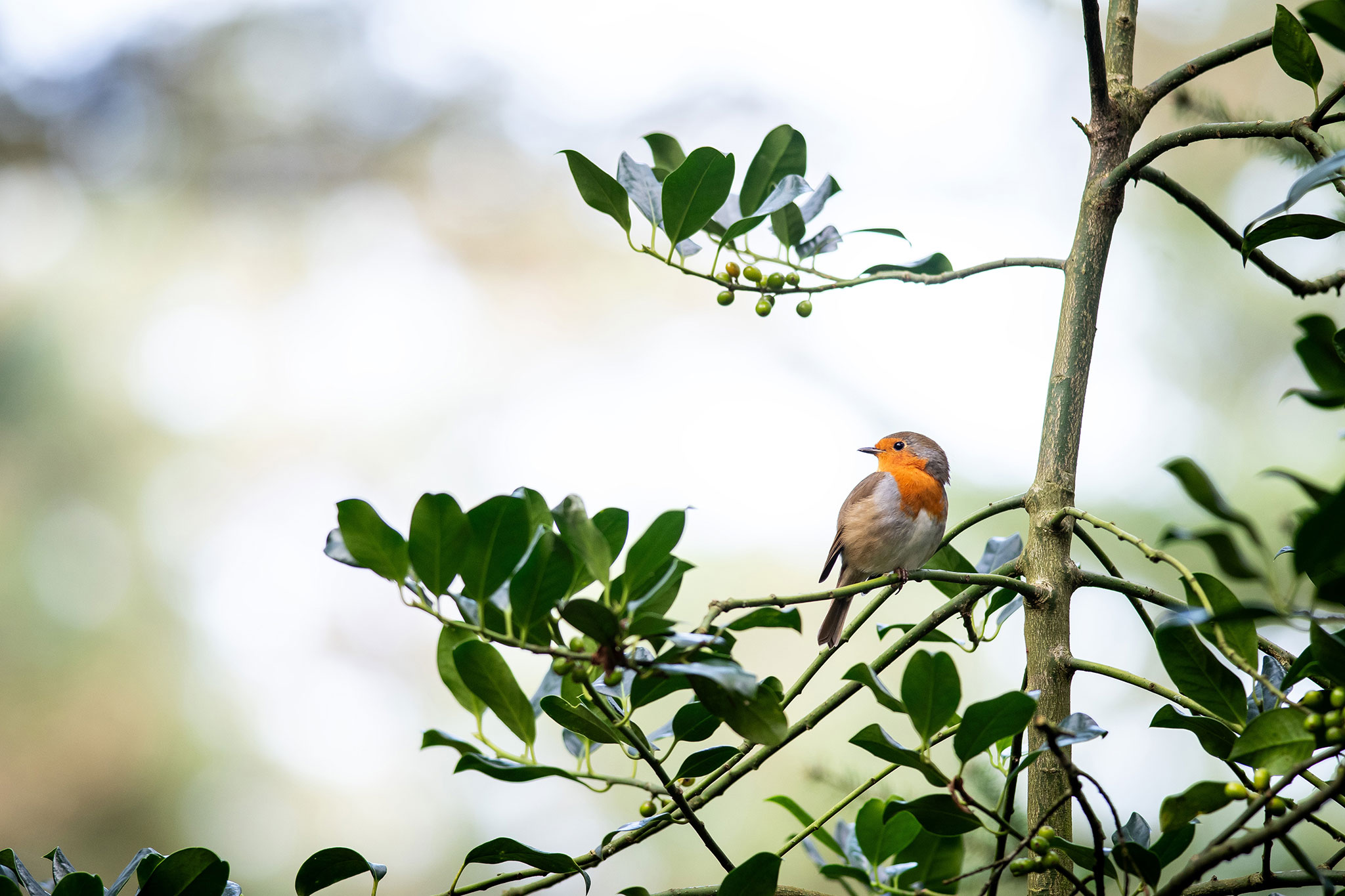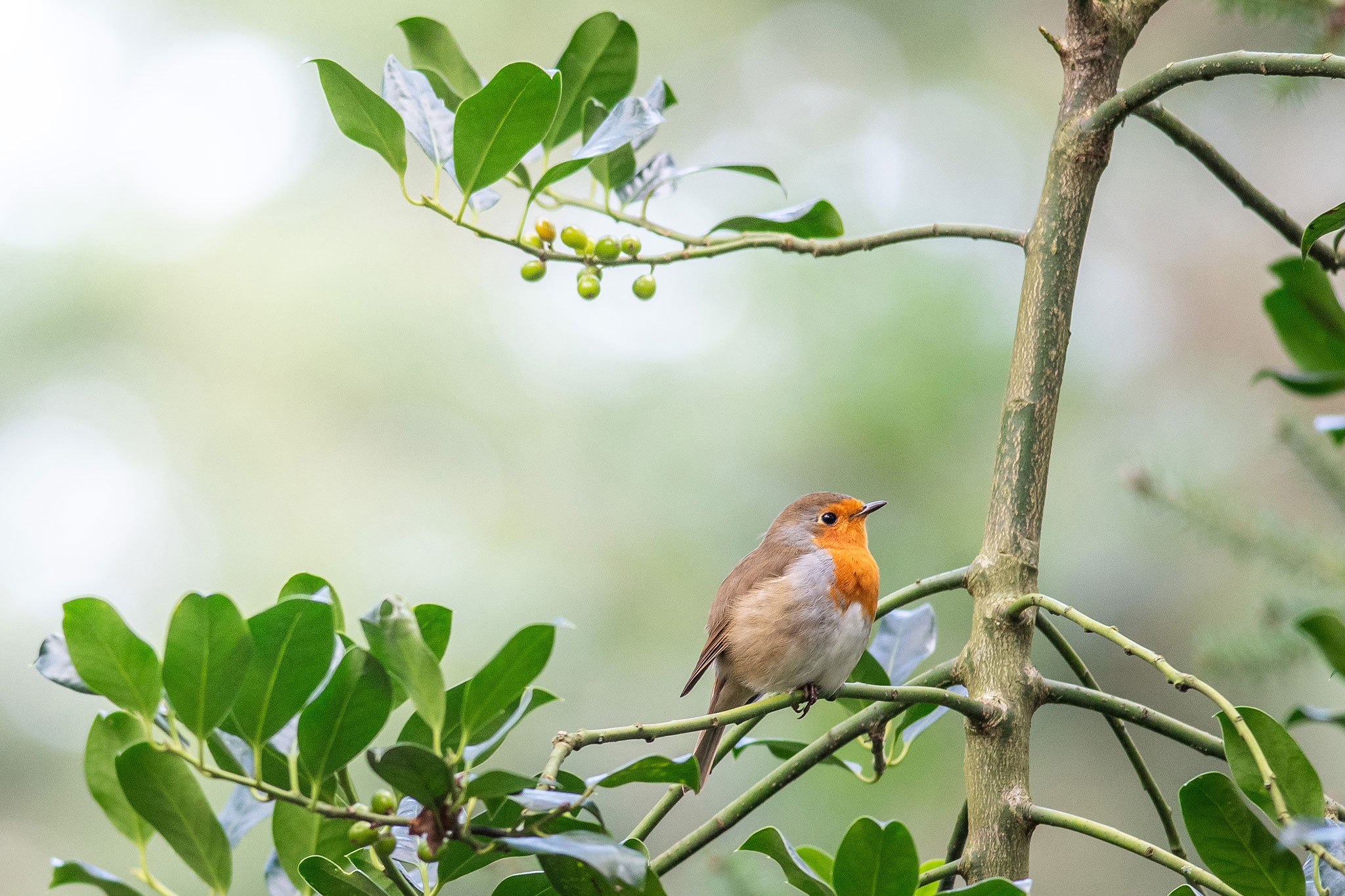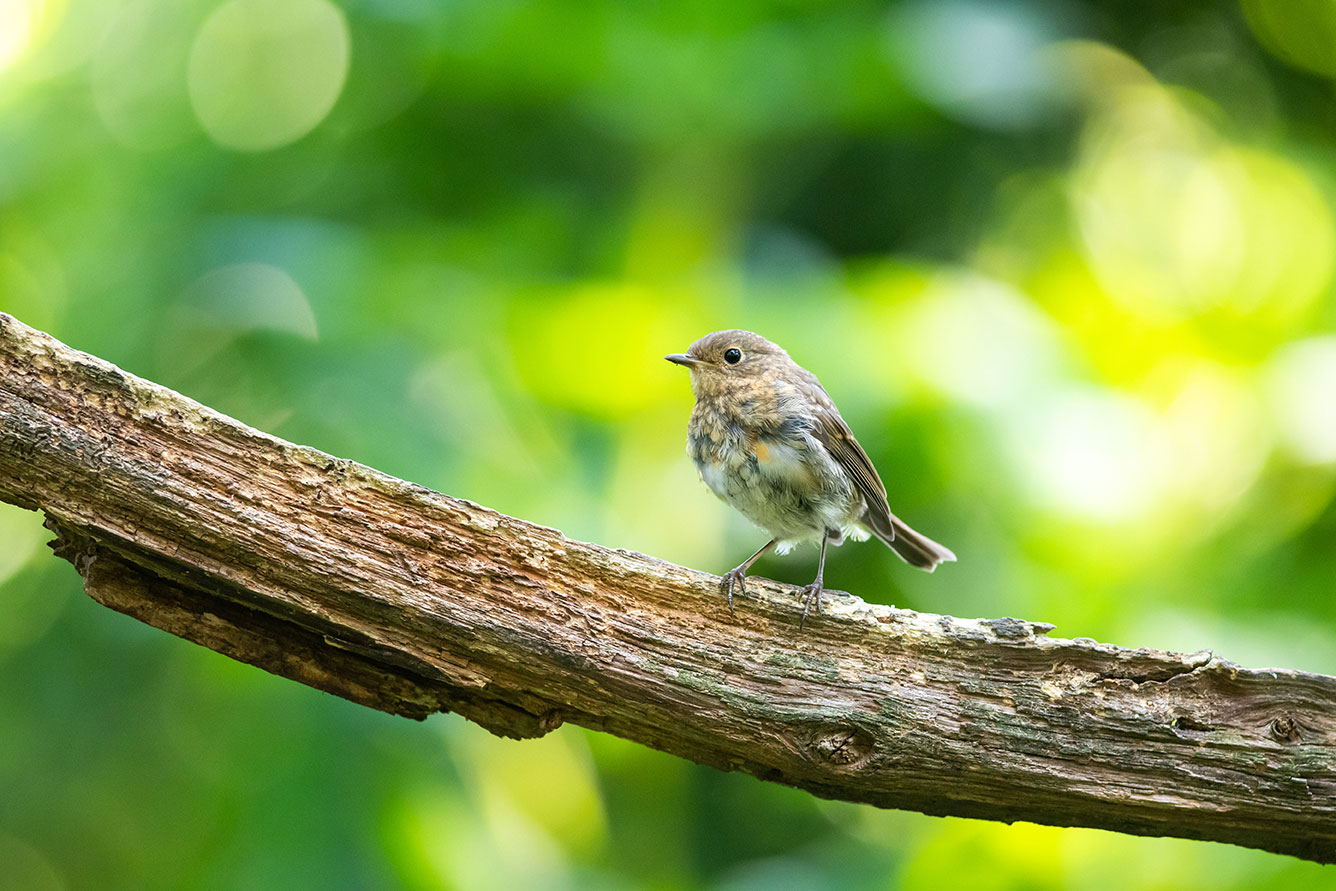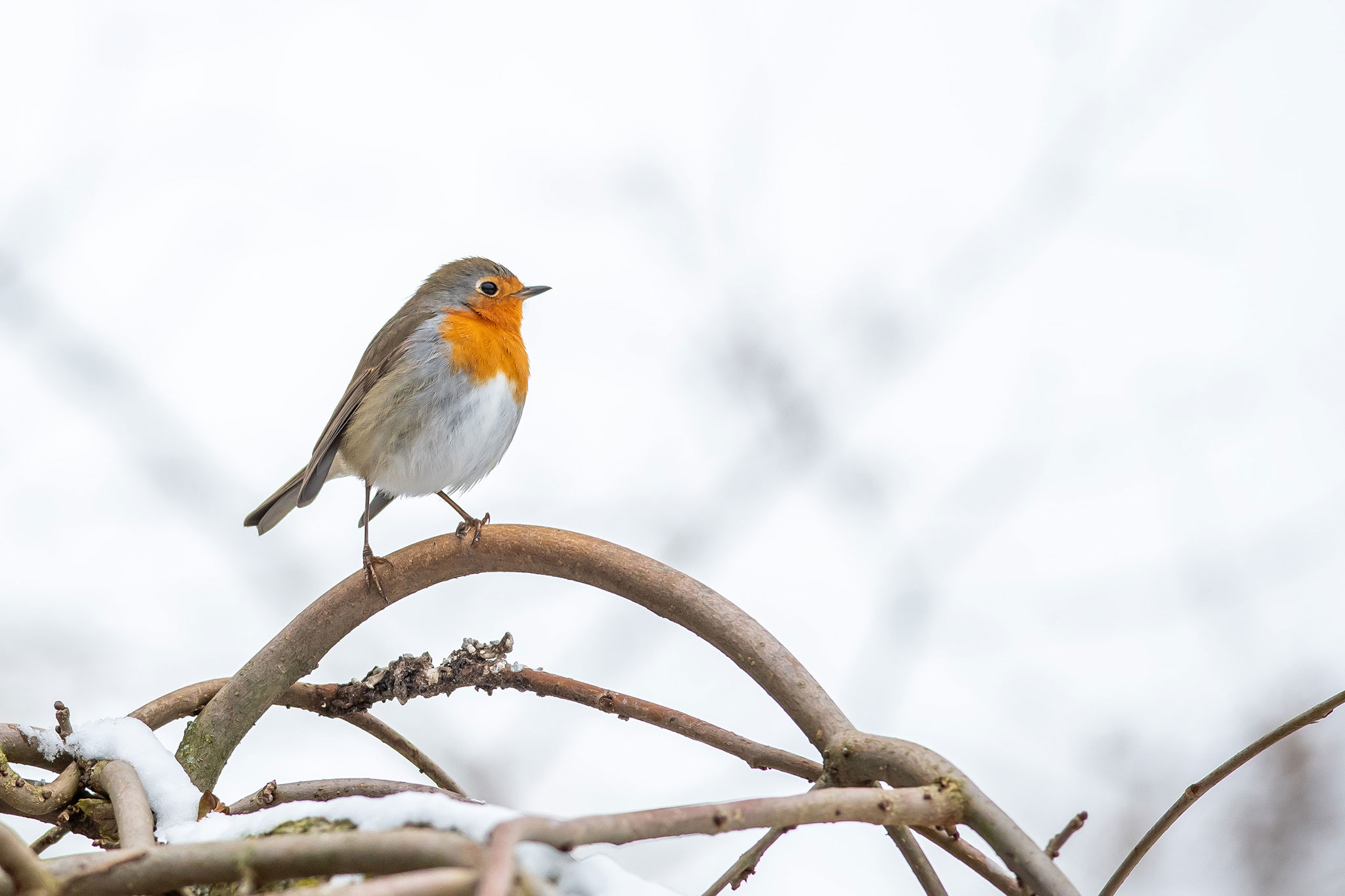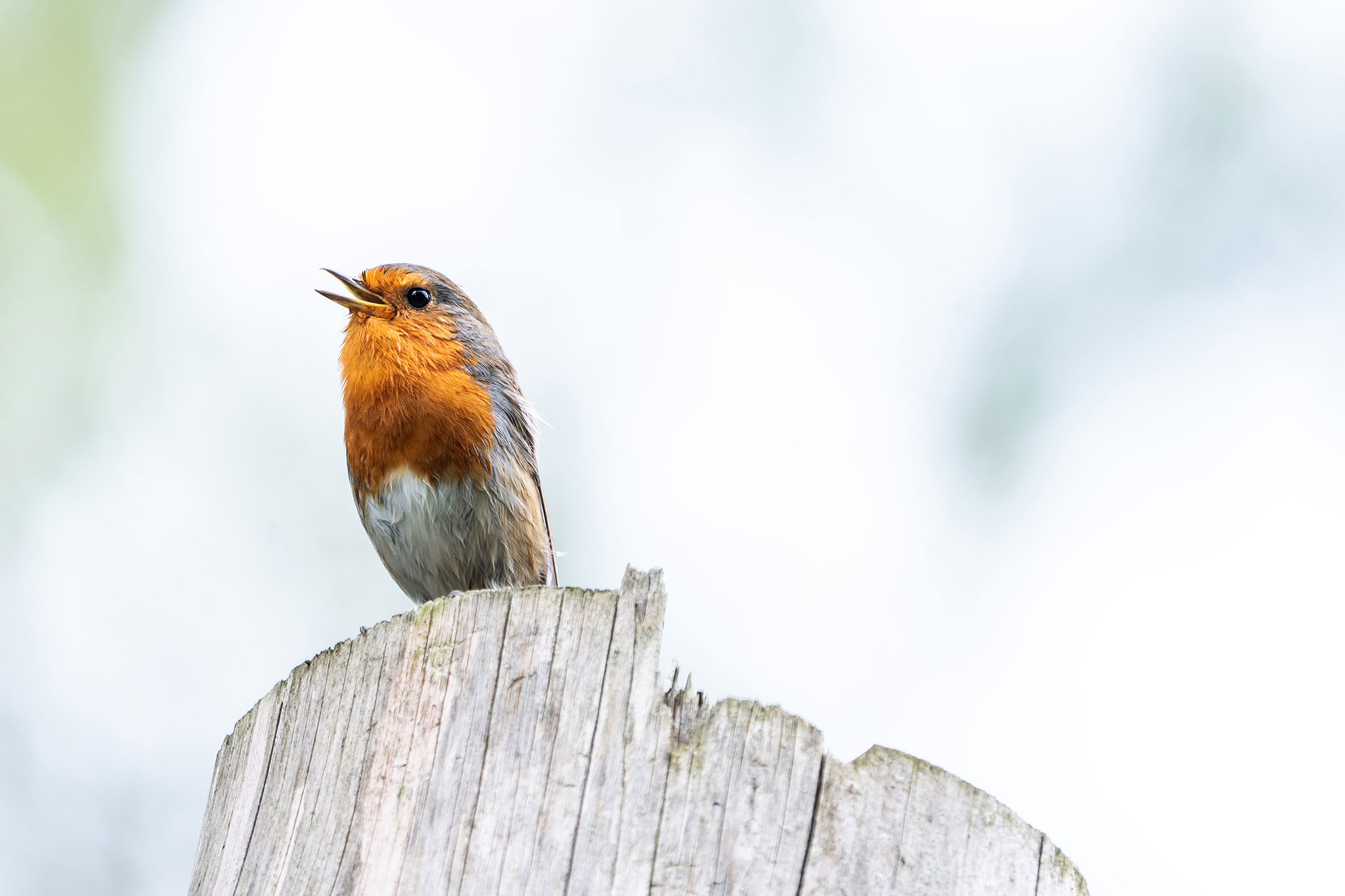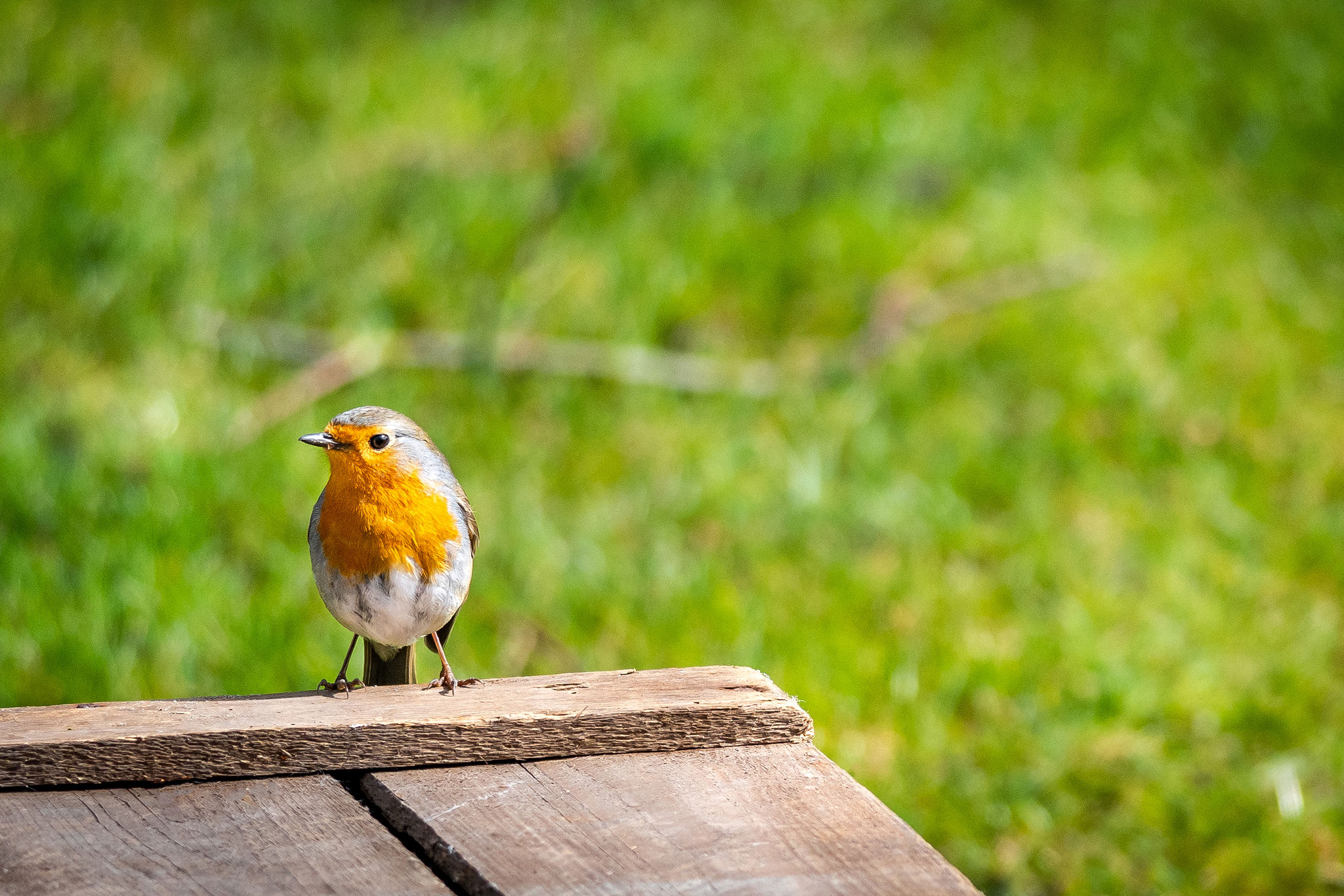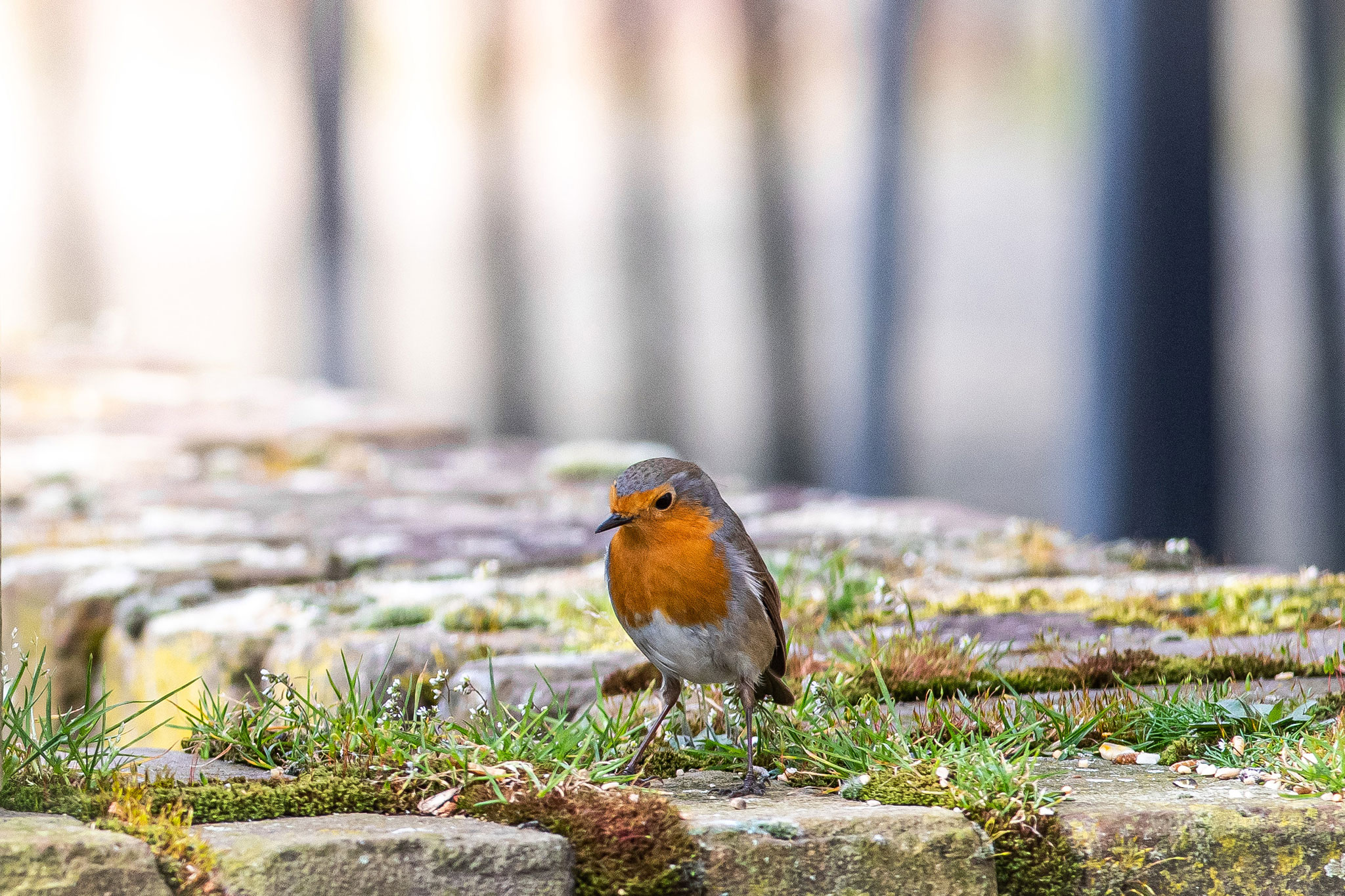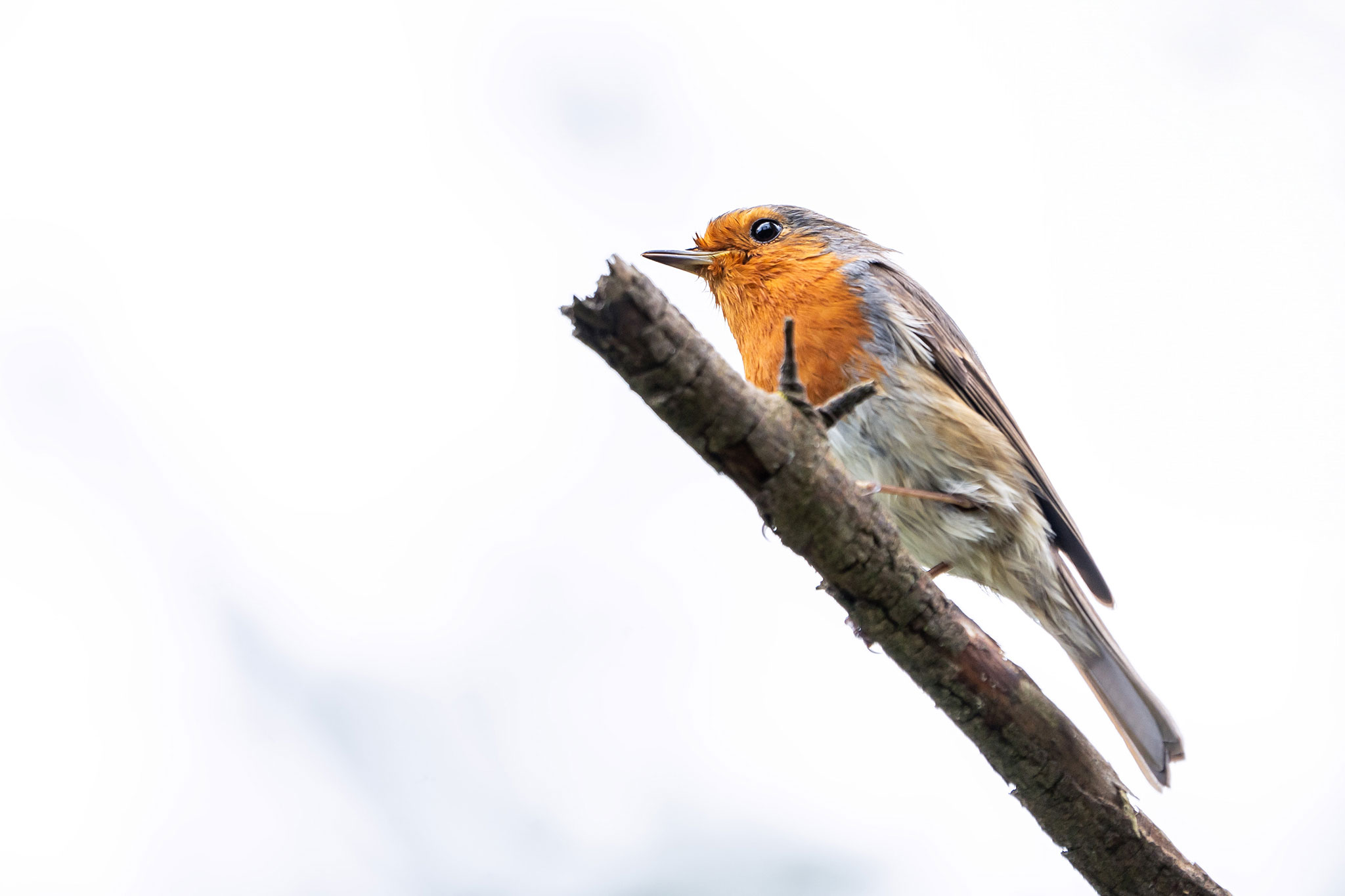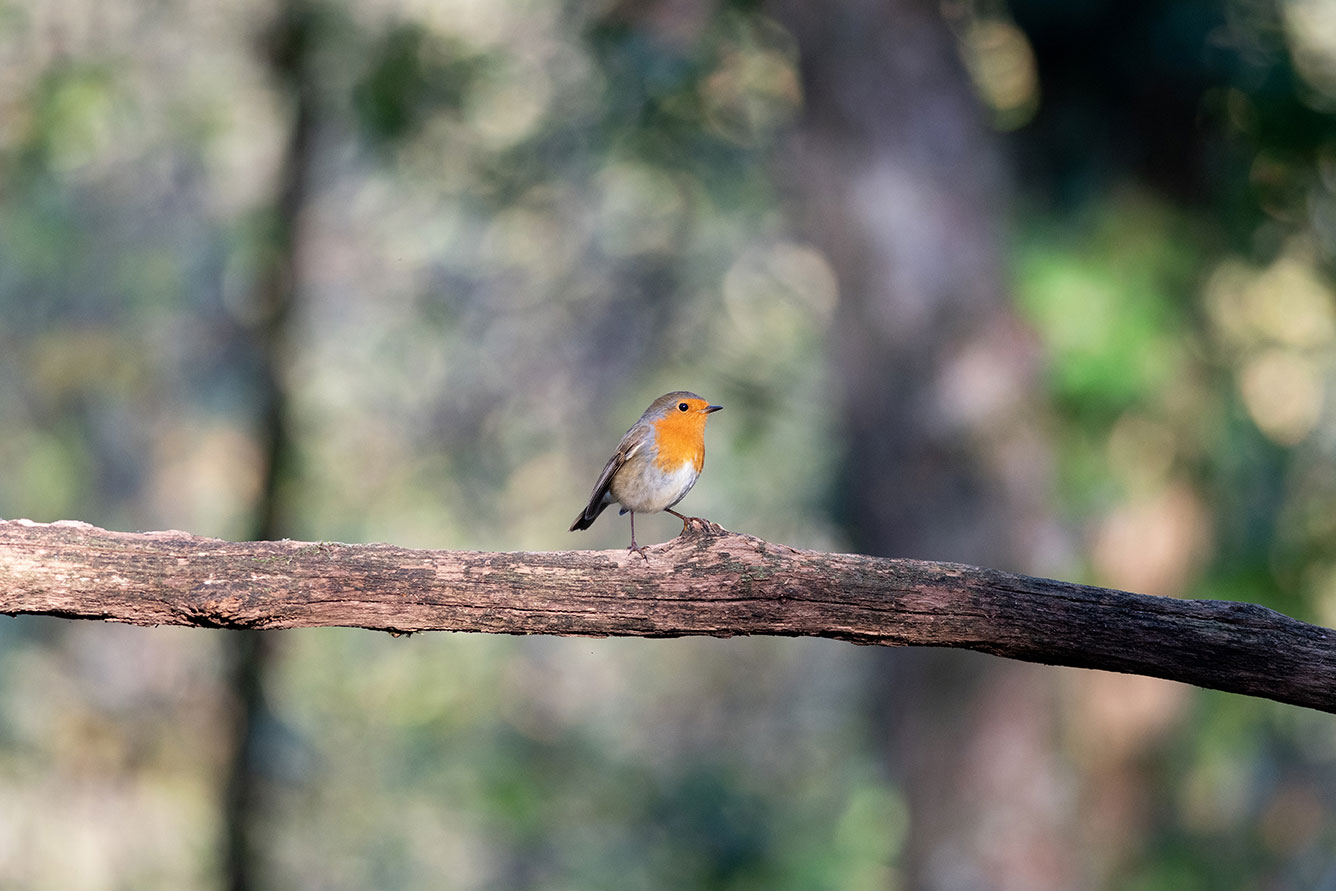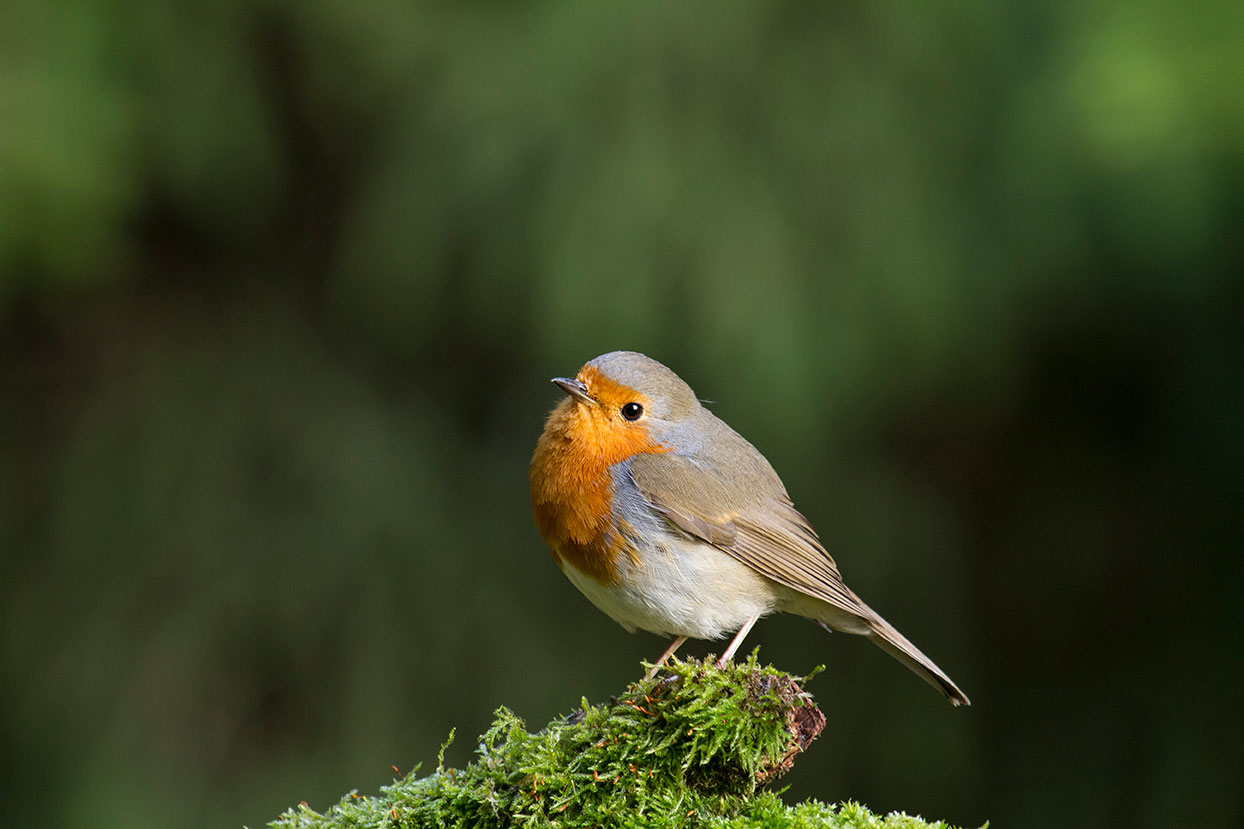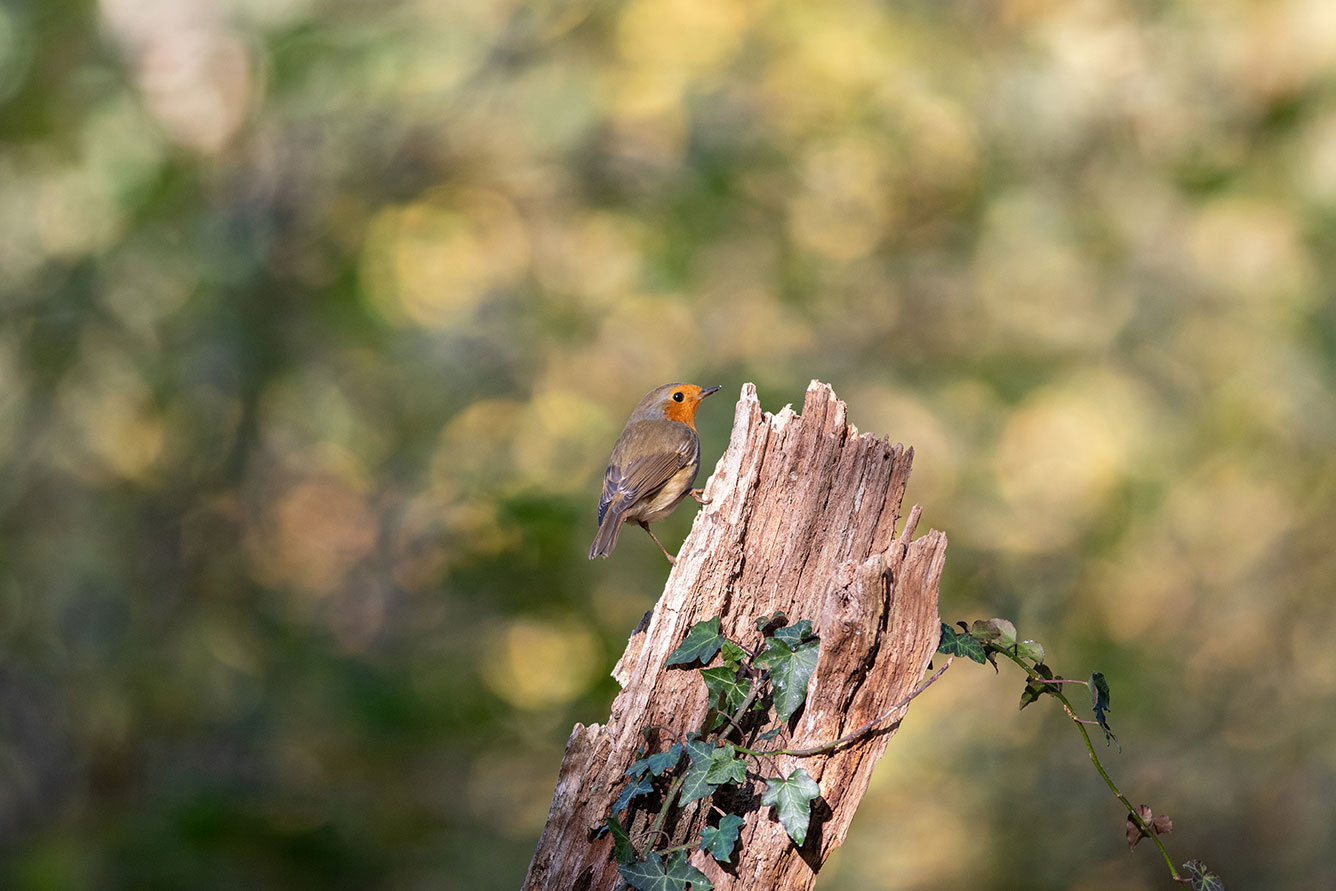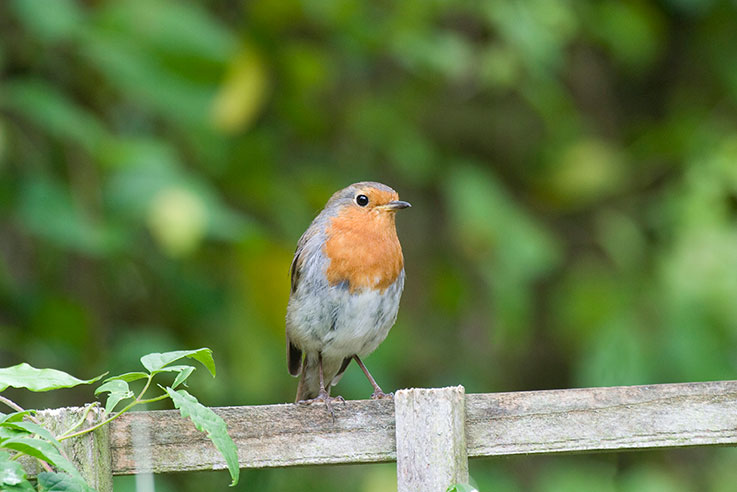If the weather is particularly cold and snowy, it is good to give your robins an additional helping hand food-wise to prevent population levels suffering. They tend to prefer foraging on the ground, so a bird feeder that can be placed in a safe place at ground level (or a bird table) is ideal. Robins like to eat worms, insects, seeds and fruits and they guard the areas in which these can be found fiercely, although males and females usually do pair up to share at this time of year.
When feeding, aim to emulate their natural diet by feeding protein-rich mealworms, energy-rich seeds and soft fruits. Our robin blend will take the guesswork out of this, plus you can also treat them with our Peanut Cakes.
In the summer, the robins diet mainly consists of insects, but as it gets colder in the winter, they then resort to fruits and grains, due to the lack of available food in colder temperatures.
How to help breeding robins & optimal nesting boxes
Robins are so-called half-cavity breeders. Our half-open nest boxes are adapted to the special needs of Robins and other half-hollow breeders. It is important that they are placed as low as possible so that the nest is close to the ground. It won’t be long until the first Robin will be moving into your nest box.
If the weather is especially warm, robins may start courting as early as January, but this has been quite rare in recent years and March onwards is more typical. The birds pair up and the female builds the nest and lays the eggs. Robins have been known to nest in some very unusual places - including old footballs - but you can increase their chances of success and prevent predation using a nest box with a wide opening.
Provide plenty of supplementary food, as the male will need to supply his mate with lots of nourishment during this period and it's best to help him avoid having to fly too far. Both parents will look after the chicks in their nest, while they fledge at just 14 days and remain dependent on their fathers for food for almost a month - the mothers are off to prepare for another brood. Any seed you can put out is therefore likely to be gratefully received, but they will be especially pleased with mealworms.
Nest building, breeding & other habits
The robin's nest is built by the female, which is constructed using moss, stalks and dry grass blades. Robins stay on their eggs for 12-15 days. The offspring receive assistance from their parents when hatching, before the mother then removes the shell and deposits it several metres away from the nest. Keeping the shells inside the nest itself would be too conspicuous.
Robins love to be in the water, where they hunt for small fish and insects in shallow waters or enjoy bathing.
Tenaciously & stubbornly. With its red breast and curious expression, the Robin is widely regarded as one of the UK's most attractive birds. However, the cute appearance doesn't tell the whole story. Robins are fiercely territorial and take aggressive action against territorial intruders. This territoriality often brings the robin into conflict with other bird species, and it is not uncommon to see aggressive behaviour towards smaller birds (sparrows, small tits). It has been suggested the red breast may play a role in this behaviour, with the bright colour used as a threat display to intimidate rivals. Such behaviour is in stark contrast to the way in which Robins interact with humans. The birds often seem completely unafraid of people and will sometimes take food directly from the hand.
How to identify a robin - appearance, sound & age distinction
Robins were voted Britain's favourite bird in 1966, and thanks to this and their distinctive plumage, most people will have no trouble identifying them. However, males and females are identical with their orange-red breasts and brown backs. Young birds on the other hand are speckled golden brown all over and don't have the bold colouring.
You'll be able to see robins all year-round. During winter, resident populations are boosted by immigrants from Scandinavia and elsewhere to stay for the season, as well as a few passing through on their way to northern Africa.
The robin is a virtuoso singer
Robins can be identified if you can't see them by their song - alarm calls are a rapid 'tick, tick, tick', while their usual tune is a melodious warbling in a higher pitch than a blackbird. Unlike most other songbird species, the female robins can also sing. The song is very similar to that of males, but slightly shorter and quieter.
Life expectancy of the robin
The life expectancy of robins is rather short, with a high mortality in the first 12 months. However, on record there are robins that have lived to be ten years old.


